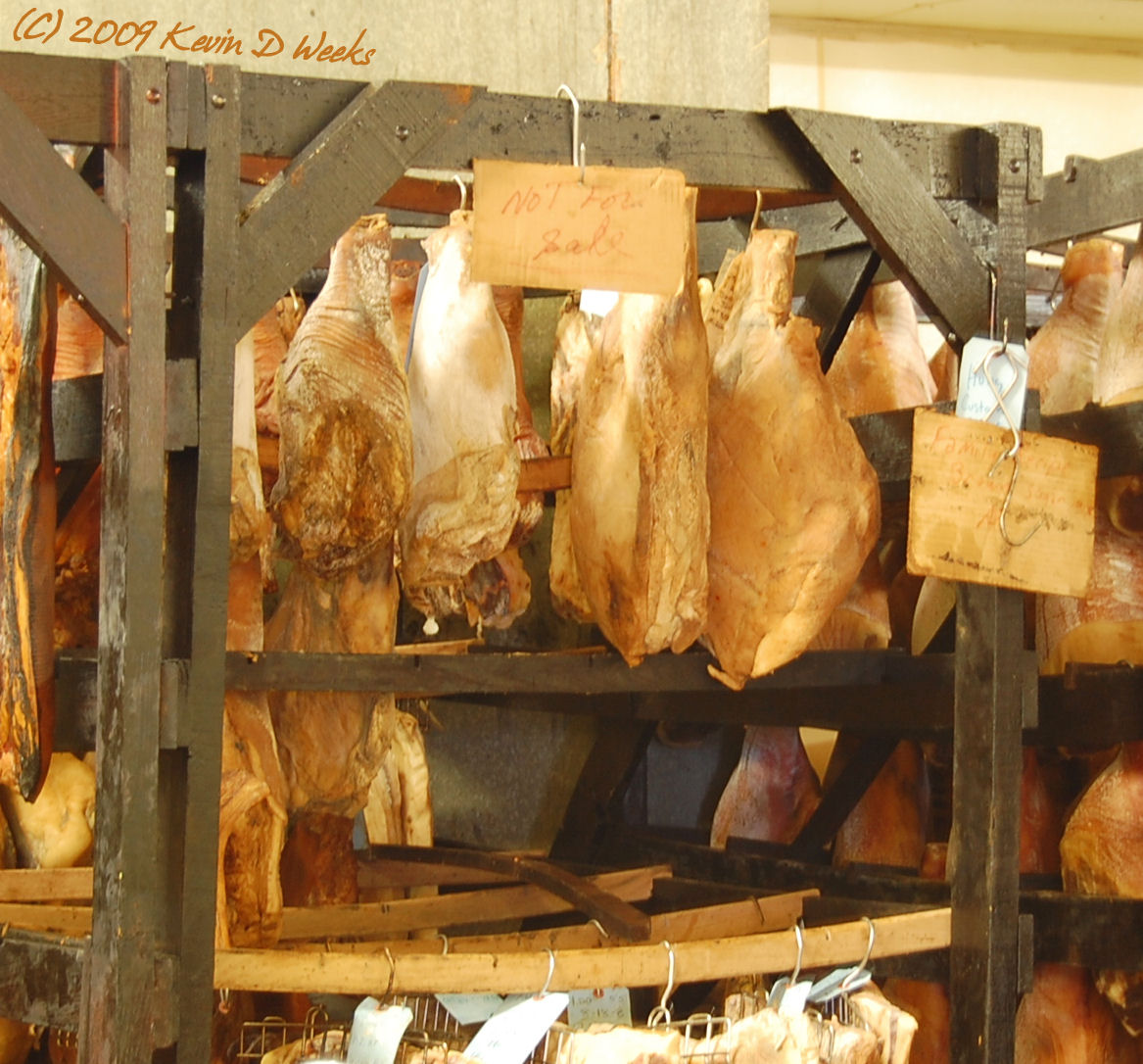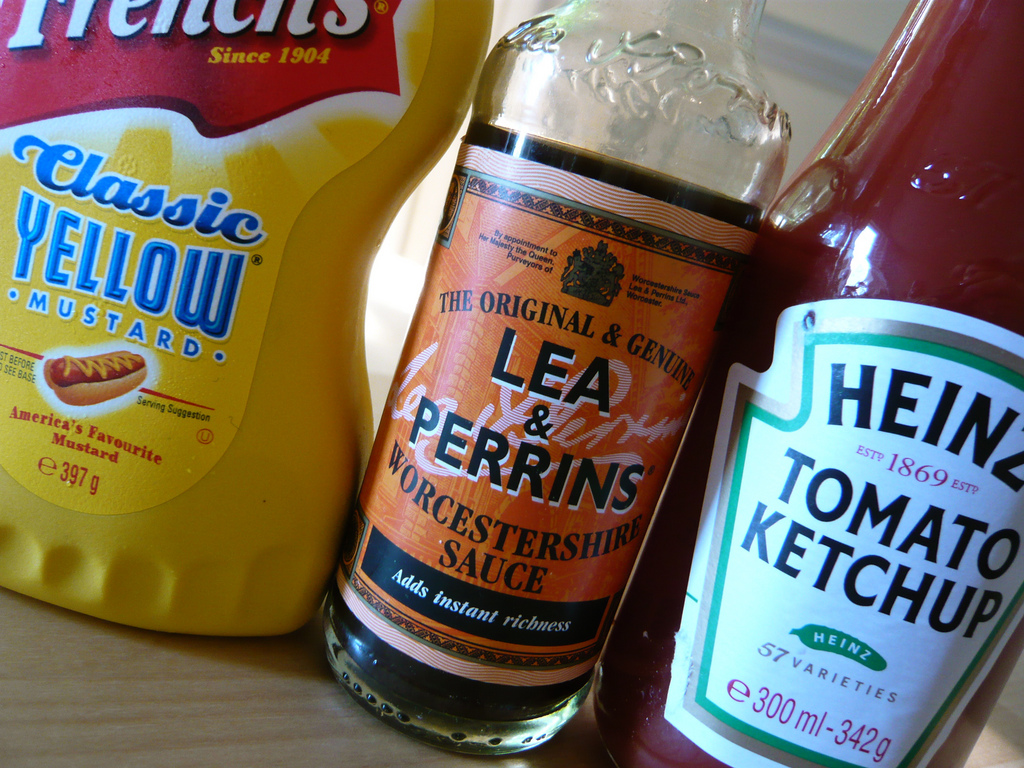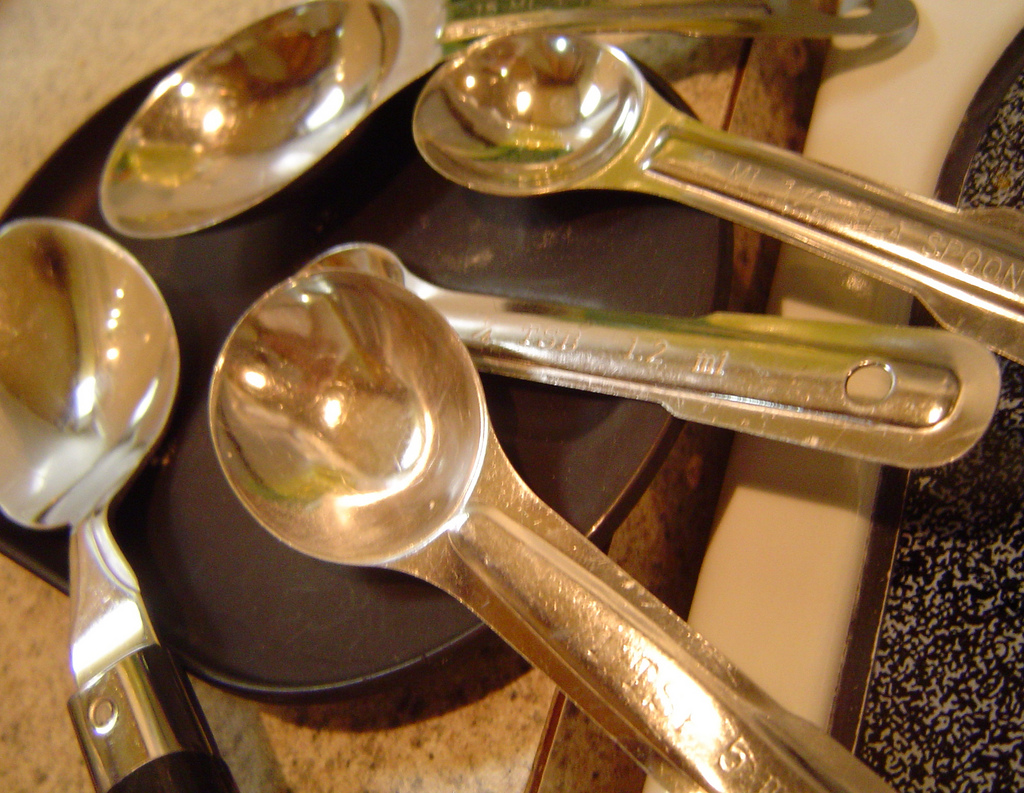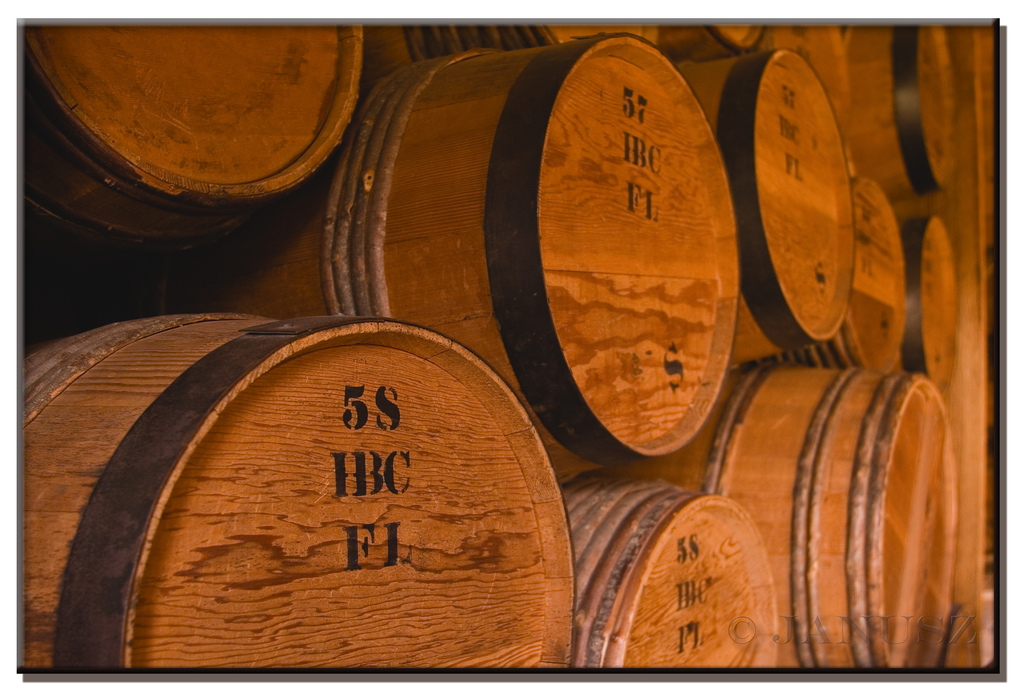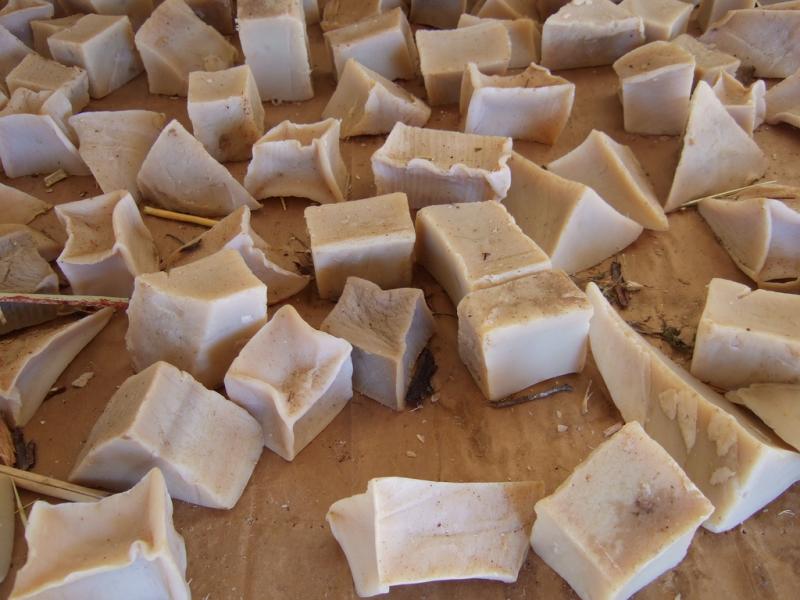The expectations surrounding women in the antebellum South were tied to domesticity and ladyhood. Although life in the South was changing in many ways, the role of women was in the home, and within the home, the work of a housewife was never done, whether the woman be married to a planter or a yeoman farmer.
Mrs. Mary Randolph's The Virginia Housewife: Or, Methodical Cook was published in 1824 and provided more than 200 recipes and pages of housekeeping wisdom. Excerpts from The Virginia Housewife are below.
Introduction.
Management is an art that may be acquired by every woman of good sense and tolerable memory. If, unfortunately, she has been bred in a family where domestic businessDomestic here means having to do with the home -- so, the business of the household. is the work of chance, she will have many difficulties to encounter; but a determined resolution to obtain this valuable knowledge, will enable her to surmount all obstacles. She must begin the day with an early breakfast, requiring each person to be in readiness to take their seats when the muffins, buckwheat cakes, &c. are placed on the table. This looks social and comfortable. When the family breakfast by detachmentsThat is, when they eat breakfast at different times throughout the morning. (A "detachment" is a group, usually of soldiers, detached or sent off from the larger group.), the table remains a tedious time; the servants are kept from their morning's mealServants would not have been permitted to eat their own breakfast until the entire family had been served., and a complete derangement takes place in the whole business of the day. No work can be done till breakfast is finished. The Virginia ladies, who are proverbially good managers, employ themselves, while their servants are eating, in washing the cups, glasses, &c.; arranging the cruets, the mustard, salt-sellers, pickle vases, and all the apparatus for the dinner table. This occupies but a short time, and the lady has the satisfaction of knowing that they are in much better order than they would be if left to the servantsMrs. Randolph was a Virginian, and so her own "servants" would have been slaves. Wealthy southerners often referred to their house slaves as servants, probably because it sounded more genteel or polite. But Mrs. Randolph was not writing only for southerners; she may have expected Northern women -- who hired servants rather than purchasing them -- to read her book as well. Europeans who had (white) servants made similar remarks about the quality of their servants' work. Mrs. Randolph is echoing the sentiment that "if you want something done right, you have to do it yourself.". It also relieves her from the trouble of seeing the dinner table prepared, which should be done every day with the same scrupulous regard to exact neatness and method, as if a grand company was expectedWhat does this say about how a woman should treat her family? What does it say about her role in the family?. When the servant is required to do this daily, he soon gets into the habit of doing it well; and his mistress having made arrangements for him in the morning, there is no fear of bustle and confusion in running after things that may be called for during the hour of dinner. When the kitchen breakfast is over, and the cook has put all things in their proper places, the mistress should go in to give her orders. Let all the articles intended for the dinner, pass in review before her: have the butter, sugar, flour, meal, lard, given out in proper quantities; the catsup, spice, wine, whatever may be wanted for each dish, measured to the cook. The mistress must tax her own memory with all this: we have no right to expect slaves or hired servants to be more attentive to our interest than we ourselves are: they will never recollect these little articles until they are going to use them; the mistress must then be called out, and thus have the horrible drudgery of keeping house all day, when one hour devoted to it in the morning, would release her from trouble until the next day. There is economyEconomy here means saving money or being frugal (or economizing). as well as comfort in a regular mode of doing business. When the mistress gives out every thing, there is no waste; but if temptation be thrown in the way of subordinates, not many will have power to resist itWhat temptation is she referring to here?; besides, it is an immoral act to place them in a situation which we pray to be exempt from ourselves.
The prosperity and happiness of a family depend greatly on the order and regularity established in it. The husband, who can ask a friend to partake of his dinner in full confidence of finding his wife unruffled by the pretty vexations attendant on the neglect of household duties -- who can usher his guest into the dining-room assured of seeing that methodical nicety which is the essence of true elegance, -- will feel pride and exultation in the possession of a companion, who gives to his home charms that gratify every wish of his soul, and render the haunts of dissipation hateful to him. The sons bred in such a family will be moral men, of steady habits; and the daughters, if the mother shall have performed the duties of a parent in the superintendence of their education, as faithfully as she has done those of a wife, will each be a treasure to her husband; and being formed on the model of an exemplary mother, will use the same means for securing the happiness of her own family, which she has seen successfully practised under the paternal roof.
Pork.
To cure baconThe term bacon at this time referred to a range of cured -- salted and smoked -- pork. Today, bacon comes only from the belly of the pig. When a hog was killed, what couldn't be eaten within a few days had to be preserved. In northern climates, meat could be frozen through the winter, but in the South, without refrigeration, nearly all pork had to be preserved. Lard, pure pork fat, will stay fresh for a time if kept cool. Some meat could be kept in a barrel of brine (salt water) until it was used; other meat was salted, smoked, and hung to dry. All of this work -- everything that happened after the hog was dead -- was the woman's responsibility.
Hogs are in the highest perfection, from two and a half to four years oldIn the nineteenth century, hogs were fed kitchen scraps ("slops") or left to forage in the woods for their food. Most hogs raised for meat today are bred to grow very quickly, fed high-calorie diets from birth, and tightly confined, and they reach full weight and are slaughtered at only six months old. Some farmers who raise hogs more slowly agree with Mrs. Randolph that the resulting meat is far more flavorful., and make the best bacon, when they do not weigh more than one hundred and fifty or sixty at farthest; they should be fed with corn, six weeks at least, before they are killed, and the shorter distance they are driven to market, the better their flesh be. To secure them against the possibility of spoiling, salt them before they get coldClearly Mrs. Randolph expects a housewife to be starting from a freshly-slaughtered hog! That is, in fact, what would have happened on a nineteenth-century farm. The men would have killed the hog, but the women would have processed the meat. A wealthy woman would have supervised that work, but most women had to do it themselves.; take out the chine or back-bone from the neck to the tail, cut the hams, shoulders and middlingsMiddling is meat cut from between the ham (thigh) and shoulder of a pig -- belly and side meat.; take the ribs from the shoulders and the leaf fat from the hams: have such tubs as are directed for beef, rub a large table spooonful of saltpetreSaltpeter, potassium nitrate, is used to preserve meats. It gives ham, corned beef, and other cured meats their pink color; without it they would be gray. on the inside of each ham, for some minutes, then rub both sides well with salt, sprinkle the bottom of the tub with salt, lay the hams with the skin downward, and put a good deal of salt between each layer; salt the shoudlers and middlings in the same manner, but less saltpetre is necessary; cut the jowl or chop from the head, and rub it with salt and saltpetre. You should cut off the feet just above the knee joint; take off the ears and nose, and lay them in a large tub of cold water for souseSouse is a kind of head cheese -- bits of meat in a vinegar-flavored jelly made from boiling the pig's head.. When the jowls have been in salt two weeks, hang them up to smoke -- do so with the shoulders and middlings at the end of three weeks, and the hams at the end of four. If they remain longer in salt they will be hard. Remember to hang the hams and shoulders with the hocksThe hocks are the short ends of the hams -- the end by the knee of the pig. down, to preserve the juices. Make a good smoke every morning, and be careful not to have a blaze; the smoke-house should stand alone, for any additional heat will spoil the meat. During the hot weather, beginning the first of April, it should be occasionally taken down, examined -- rubbed with hickory ashes, and hung up again. The generally received opinion that saltpetre hardens meat, is entirely erroneous: -- it tends greatly to prevent putrefaction, but will not make it hard; neither will laying in brine five or six weeks in cold weather, have that effect, but remaining in salt too long, will certainly draw off the juices, and harden it. Bacon should be boiled in a large quantity of water, and a ham is not done sufficiently, till the bone on the under part comes off with ease. New bacon requires much longer boiling than that which is old.
Beef.
Calf's heart, a nice dish
Take the heart and liver from the harslet, and cut off the windpipe, boil the lightsThe "lights" are the lungs of the animal. very tender, and cut them in small pieces -- take as much of the water they were boiled in as will be sufficient for gravy; add to it a large spoonful of white wine, one of lemon pickle, some grated nutmeg, pepper and salt, with a large spoonful of butter, mixed with one of white flour; let it boil a few minutes, and put in the minced lights, set it by till the heart and liver are ready, cut the ventricle out of the heart, wash it well, lard it all over with narrow slips of middling, fill the cavity with good forcemeatForcemeat is a mixture of ground lean meat and fat, often with other seasonings, such as the mixture stuffed (or "forced") into sausages., put it in a pan on the broad end, that the stuffing may not come out; bake it a nice brown, slice the liver an inch thick and broil it, make the mince hot, set the heart upright in the middle of the dish, pour it around, lay the broiled liver on, and garnish with bunches of fried parsley; it should be served up extremely hot.
Poultry, &c.
Fried chickensMany of Mrs. Randolph's recipes are essentially the same as those available in cookbooks today. Fried chicken, for example, hasn't changed in nearly 200 years. Mrs. Randolph assumes, though, that her readers can cut up a chicken -- something few people know how to do today. In 1824, a chicken would have been slaughtered just before it was cooked -- by the housewife, or under her supervision.
Cut them up as for the fricassee, dredge them well with flour, sprinkle them with salt, put them into a good quantity of boiling lard, and fry them a light brown; fry small pieces of mush and a quantity of parsley nicely picked, to be served in the dish with the chickens; take half a pint of rich milk, add to it a small bit of butter, with pepper, salt, and chopped parsley; stew it a little, and pour it over the chickens, and then garnish with the fried parsley.
Ochra and tomatos
Take an equal quantity of each, let the ochra be young, slice it, and skin the tomatos; put them into a pan without water, add a lump of butter, an onion chopped fine, some pepper and salt, and stew them one hour.
Macaroni
Boil as much macaroni as will fill your dish, in milk and water, till quite tender; drain it on a sieve, sprinkle a little salt over it, put a layer in your dish, then cheese and butter as in the polenta, and bake it in the same manner.
Mock macaroni
Break some crackers in small pieces, soak them in milk until they are soft; then use them as a substitute for macaroni.
Gaspacho -- SpanishJust as cooks today like to show off their range of knowledge and abilities by making foods from other cultures, women in the early nineteenth century could show off for guests by making foreign foods like gazpacho, a cold soup from Spain.
Put some soft biscuit or toasted bread in the bottom of a sallad bowl, put in a layer of sliced tomatos with the skin taken off, and one of sliced cucumbers, sprinkled with pepper, salt, and chopped onion; do this until the bowl is full; stew some tomatos quite soft, strain the juice, mix in some mustard, oil, and water, and pour over it; make it two hours before it is eaten.
Sauces.
Fish sauce, to keep a yearThis is essentially Worcestershire sauce, but Worcestershire sauce as we know it wasn't made commercially until the 1830s and probably wouldn't have been available in the South before the Civil War.
Chop twenty-four anchovies, bones and all, ten shallots, a handful of scraped horse radish, four blades of mace, one quart of white wine, one pint of anchovy liquor, one pint of claret, twelve cloves, and twelve pepper corns; boil them together till reduced to a quart, then strain it off into a bottle for use. Two spoonsful will be sufficient for a pound of butter.
Pepper vinegar
Get one dozen pods of pepper when ripe, take out the stems, and cut them in two; put them in a kettle with three pints of vinegar, boil it away to one quart, and strain it through a sieve. A little of this is excellent in gravy of every kind, and gives a flavour greatly superior to black pepper; it is also very fine when added to each of the various catsups for fish sauce.
Vegetables.
To dress saladBottled salad dressings were unheard of; the cook had to dress the salad herself. And note that lettuce and other greens and herbs would have come from a garden near the house -- without refrigeration, there is no way to keep lettuce fresh for more than a few hours.
To have this delicate dish in perfection, the lettuce, pepper grass, chervil, cress, &c. should be gathered early in the morning, nicely picked, washed, and laid in cold water, which will be improved by adding ice; just before dinner is ready to be served, drain the water from your salad, cut it into a bowl, giving the proper proportions of each plant; prepare the following mixture to pour over it: boil two fresh eggs ten minutes, put them in water to cool, then take the yolks in a soup plate, pour on them a table spoonful of cold water, rub them with a wooden spoon until they are perfectly dissolved; then add two spoonsful of oil: when well mixed, put in a teaspoonful of salt, one of powdered sugar, and one of made mustard; when all these are united and quite smooth, stir in two table spoonsful of commonCommon vinegar was plain vinegar (not flavored with any herbs)., and two of tarragon vinegar; put it over the salad, and garnish the top with the whites of the eggs cut into rings, and lay around the edge of the bowl young scallions, they being the most delicate of the onion tribe.
Puddings, &c.
Apple frittersApple fritters are another dish you might well eat today, but notice that Mrs. Randolph doesn't provide times, temperatures, or measurements. Cooking was done in a fireplace or on a wood stove or coal stove, and so the cook would not have had fine control over temperatures. And since temperatures couldn't be standardized, neither could times -- a lower flame meant longer cooking times. Measurements for cooking weren't standardized until the end of the nineteenth century, by Fannie Farmer. Until then, a "teaspoon" was a spoon used for stirring tea, and a "tablespoon" was a soup spoon -- which might vary a good deal in size. A "cup" meant a teacup. You'll also see measurements like "a piece of butter the size of a walnut" or "the size of an egg." Cooks had to work by eye, by feel, and by taste.
Pare some apples, and cut them in thin slices -- put them in a bowl, with a glass of brandy, some white wine, a quarter of a pound of pounded sugar, a little cinnamon finely powdered, and the rind of a lemon grated; let them stand some time, turning them over frequently; beat two eggs very light, add one quarter of a pound of flour, a table-spoonful of melted butter, and as much cold water as will make a thin batter; drip the apples on a sieve, mix them with the batter, take one slice with a spoonful of batter to each fritter, fry them quickly of a light brown, drain them well, put them in a dish, sprinkling sugar over each, and glaze them nicely.
Cakes.
Dough nuts -- a Yankee cakeKrispy Kreme didn't come around until 1937, so doughnuts were a "Yankee cake" in 1824.
Dry half a pound of good brown sugar, pound it, and mix it with two pounds of flour, and sift it; add two spoonsful of yeast, and as much new milk as will make it like bread: when well risen, knead in half a pound of butter, make it in cakes the size of a half dollar, and fry them a light brown in boiling lard.
To make bread.
When you find the barrel of flourSince a housewife was responsible for baking all the bread her family needed -- a great deal of bread if she had several children -- she bought flour by the barrel, not by the five-pound bag. a good one, empty it into a chest or box, made for the purpose, with a lid that will shut close: it keeps much better in this manner than when packed in a barrel, and even improves by lying lightly; sift the quantity you intend to make up -- put into a bowl two gillsA gill was a measurement for liquid volume equal to a quarter pint (half a modern cup, or four fluid ounces). and a half of water for each quart, with a tea-spoon heaped up with salt, and a large spoonful of yeast for each quart; stir this mixture well, put into another bowl one handful of flour from every quart; pour a little of the mixture on to wet it, then more, until you get it all in, taking great care that it be smooth, and quite free from lumps; beat it some minutes, take one-third of the flour out of the kettle, pour on the batter, and sprinkle over it the dry flour; stop the kettle, and set it where it can have a moderate degree of warmth: when it has risen well, turn it into a bowl, mix in the dry flour, and knead it on a board till it looks quite light; return it to the kettle, and place it where it can have proper heat: in the morning, take the dry crust carefully from the top, put the dough on a board, knead it well, make it into rolls, set them on tin sheets, put a towel over, and let them stand near the fire till the oven is ready. In winter, make the bread up at three o'clock, and it will be ready to work before bed time. In summer, make it up at five o'clock. A quart of flour should weigh just one pound and a quarter. The bread must be rasped when bakedShe is saying that you must scrape the hard crust from the bread after it is baked..
Pickling
Tomato catsupCatsup was eaten in the antebellum period, but it wasn't always made from tomatoes. Mrs. Randolph also provided recipes for mushroom catsup and oyster catsup. And, as with all other condiments, the housewife would have had to make it herself (or have her servants make it).
Gather a peckA peck is 8 dry quarts. of tomatos, pick out the stems, and wash them; put them on the fire without water, sprinkle on a few spoonsful of salt, let them boil steadily an hour, stirring them frequently; strain them through a colander, and then through a sieve; put the liquid on the fire with half a pint of chopped onions, half a quarter of an ounce of mace broke into small pieces; and if not sufficiently salt, add a little more -- one table-spoonful of whole black pepper; boil all together until just enough to fill two bottles; cork it tight. Make it in August, in dry weather.
Cordials, &c.
To make soapA cordial is a fancy liqueur or alcoholic beverage, and so it isn't clear why Mrs. Randolph put soap under the heading of "cordials &c." -- except that this was just the "miscellaneous" chapter. Regardless, soap was one more thing a housewife would have been responsible for making.
Put on the fire any quantity of lye you choose, that is strong enough to bear an eggLye is sodium hydroxide (NaOH), a strongly alkaline substance. It was made from fireplace ashes and was used not only to make soap but in making hominy. Lye is a dangerous chemical, and a solution of it can burn the skin. A solution "strong enough to bear an egg" was a solution of lye and water in which there was enough lye that an egg would float -- a fairly strong solution. -- to each gallon, add three quarters of a pound of clean grease: boil it very fast, and stir it frequently -- a few hours will suffice to make it good soap. When you find by cooling a little on a plate that it is a thick jelly, and no grease appears, put in salt in the proportion of one pint to three gallons -- let it boil a few minutes, and pour it in tubs to cool -- (should the soap be thin, add a little water to that in the plate, stir it well, and by that means ascertain how much water is necessary for the whole quantity; very strong lye will require water to thicken it, after the incorporation is complete; this must be done before the salt is added.) Next day, cut out the soap, melt it, and cool it again; this takes out all the lye, and keeps the soap from shrinking when dried. A strict conformity to these rules, will banish the lunar bugbear, which has so long annoyed soap makers. Should cracknelsCracknels are small pieces of fat pork fried to a crisp. It isn't clear why you'd want these in soap. be used, there must be one pound to each gallon. Kitchen grease should be clarified in a quantity of waterWhen a pig was slaughtered, its fat would be cut into small pieces, set in a pot over low heat, and melted -- a process called rendering. Small pieces that didn't melt but slowly fried to a crisp in the fat were called cracklings or cracknels (which she mentions above). The liquid fat is then strained. Rendered grease keeps much longer than raw fat. Once grease has been used ("kitchen grease") it can be clarified, made clear again, for re-use. To clarify grease, you combine it with water, bring to a boil, then turn off the heat and pour in cold water. The mixture will separate into layers, with clear fat at the top. The clear (clarified) fat can be ladled off and re-used., or the salt will prevent its incorporating with the lye.
Soft soap is made in the same manner, only omitting the salt. It may also be made by putting the lye and grease together in exact proportions, and placing it under the influence of a hot sun for eight or ten days, stirring it well four or five times a day.
